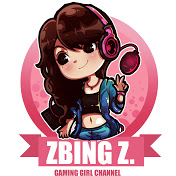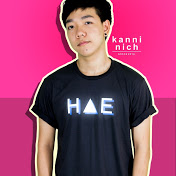Influencer Marketing in Thailand
Thailand serves as an one of the most promising emerging markets throughout Asia. Booming industries, such as tourism and retail, are experiencing a significant growth — as both visibility and discoverability via social media mediums provides greater marketing opportunities for remote businesses. Thai businesses have been quick to adopt social media not only to promote and advertise their services, but also as an element of savvy business strategies targeting international audiences.
The accelerated growth in mobile technology are a clear driver, with the number of smartphones users in Thailand now numbering 20 million, and increasingly powerful smartphone cameras giving connected users the opportunity to share updates with friends and followers instantly. For the mobile-first consumers in the country like Thailand , social media is the totality of the web experience as is the main access point for the internet, causing a rapid uptake of new channels as they explore the social ecosystem.
For local Thai business, the opportunities to successfully market and grow business, both locally and globally, are endless. Social media offers a level of visibility and access that surpasses many of the barriers that underdevelopment can pose.
Unmistakably, Thailand is one of the leading countries in Southeast Asia when it comes to social media usage. Social media has had a tremendous impact on users and brands in Thailand and it has increasingly become an important tool for business marketing and for business success.
Here's a quick low down on the state of social media marketing and influencer marketing landscape in the Thailand.
- The total population in Thailand is 68.84 million.
- As of the fourth quarter 2016, 67% of the Thailand population were active social media users. The most popular social network was Facebook with a 65% penetration rate.
- Facebook users in Thailand grew 15% in the past year to 47 million users. This means 70% of Thailand’s population uses Facebook, making us the country with ninth largest number of Facebook users.
- As of May 1, social media users in Thailand on Facebook, Instagram and Twitter were up an average of 20% year-on-year, rising to 47 million, 11 million and 9 million respectively.
- Among those 47 million users, 27 million live in Bangkok. Other provinces where Facebook is popular are Chonburi (1.6 million users), Chiang Mai (1.1 million users), and Nakhon Ratchasima (1 million users.). Bangkok is one of the world's biggest cities for Facebook users in 2017 with 27 million users.
- Thailand ranked fifth in terms of Facebook Messenger users with 26 million as of May 1, out of 724 million globally.
- There are 11 million Instagram users in Thailand. Ranking at 13th in the world for number of users, Thai people are found to be most active on Instagram on the weekends, with the most engaged periods being 6-11pm.
- With more celebrities responding to fans on Twitter, statistics also show that Twitter users in Thailand have grown by over 70% in the last year, from 3.1 million to 9 million users, with peak time for tweeting being between 8pm-12am on Thursdays, Fridays and Saturdays.
- On the social front, research shows that 52% of Facebook users are male while 48% are female. There are also slightly more male users on YouTube at 50.8% and 49.2% female users. Instagram sees more female users at 65% female and 35% male.
- Age-wise, we see for Facebook that 32% of users are between 18-24 years old and 31% are between 25-34 years old. For Youtube, the largest group of users is the same as Facebook with 18-24 years old making up 45.6% of the user base and 24-35 years old making up 24.9 percent.
- The highly-curated Instagram network is skewed towards the younger generation, with 16 – 24 year olds making up more than half (59%) of Instagram users in Thailand providing strong opportunities to connect with younger audiences.
Top Influencer Marketing Statistics Every Marketer Should Know
- 70% of teenage YouTube subscribers trust influencer opinions over traditional celebrities.
- 86% of women turn to social networks before making a purchase.
- 32% of influencers who currently work with brands cite Facebook as the best platform, followed by Instagram at 24%.
- 71% of consumers are more likely to make a purchase based on a social media reference.
- 86% of the most-viewed beauty videos on YouTube were made by influencers, compared to 14% by beauty brands, themselves.
- 57% of beauty and fashion companies use influencers as part of their marketing strategies.
- On average, businesses generate $6.50 for every $1 invested in influencer marketing.
Why Influencer Marketing?
Brands looking into influencer marketing should take note of the trends in the industry in order to fully strategise their campaign. We have identified 3 prominent trends of influencer marketing coming 2017:
Trend #1: Emphasis Towards Content Marketing
In 2016, we have seen and experienced both the good and not-so-positive impact influencer marketing can bring to a brand. Some prominent mistakes made by brands include the overuse of influencers, selecting influencers irrelevant to your brand and so on. But one big mistake that should be avoided is the posting of content which is irrelevant to the audience.
Coming 2017, the emphasis on quality content will be largely noticeable. Content posted by Thai influencers not only have to be engaging and interactive, it also have to be new, natural, suited to the influencer and brand, shareable and encompasses a call-to-action to be able to reach out to a wide network of your target and produce positive results. Consequentially, brands which invest greatly in creating quality content will have an edge over the rest.
Trend #2: People-Centric Influencer Marketing
Most brands and marketers are focused on tapping on the hype of influencer marketing without considering the rationale behind those marketing efforts. In the upcoming year, it is crucial for brands to become more people-centric and focus on the audience when implementing each campaign.
Influencer marketing in 2017 will need to provide consumers with what they desire and explain how purchasing your product or service will add value to their life. With many marketers executing their marketing campaigns without much thought regarding their audience, being the first few to resonate with the audience will bring your brand ahead.
Trend #3: Thai Becoming Risk-Adverse
Being risk-adverse, Thai consumers are increasingly relying on influencers and word-of-mouth to decide on their purchases. This should be seen as an opportunity to leverage on the available influencers to bring about more sales through the online platform. To be able to leverage on influencer marketing to provide a form of reassurance for the consumers would definitely bring about positive impact on your brand's ROI.
Influencer marketing would hence be a great platform to reach out to Thailand market, especially the young Thais who constantly look online for reviews. These characteristics of the community is what make influencer marketing extremely effective in Thailand.
How To Get Started With Influencer Marketing?
Reaching out to Influencer Personally or through Influencer Marketing Agency
You may ask, what are the various ways to engage Instagram influencers in Thailand to perform influencer marketing? There are simply two options: businesses to reach out to influencers personally, or go through an influencer marketing agency.
On the surface, it may seem reasonable to reach out to influencers personally with the presumed low cost and easy reach. However, with the vast amount of influencers in Thailand, each focusing on specific topics of interest, performing influencer marketing and liaising can be a real challenge. To execute an effective influencer marketing campaign, one should be sure to read up on the various aspect of influencer marketing from the various articles and ebooks available online.
Alternatively, an influencer marketing agency would be of great help in terms of identifying the right influencer for your marketing campaign, negotiating prices and measuring results.
Thailand Fastest Growing Influencer Marketing Agency
StarNgage is an Influencer marketing and reporting platform allowing brands to customise, manage, launch, and measure digital advertising campaigns on Instagram. StarNgage empowers brands to partner and advertise with everyday influencers - the same way you would on search engines or social networks!
StarNgage provides 4 main services: Targeting, Identifying, Amplifying and Tracking.
Target
Set your targeted customer profiles and categories while indicating preferred Cost-Per Engagement
Identify
Search for category-specific and brand aligned Influencers with the right profile to promote your campaign through our patented matching algorithm
Amplify
Mobilise Influencers to create optimised visual content that engages your targeted consumers, amplifies your brand, and generate online buzz
Track
Track your influencer marketing performance through our dashboard and measure your ROI. Pay based on desired results.
How To Choose Your Influencer Marketing Goals and KPIs
The Most Common Influencer Marketing Campaign Goals
After activating more than 10,000 influencers across 120 campaigns, we've seen influencers used in many different ways. Here are the most common goals we saw across our campaigns.
The Most Common Influencer Marketing Campaign KPIs
Reach
Can be measured based on the number of followers of influencers. Easy to measure, but the least valuable.
Clicks
Easy to measure and one of the most important performance based metrics
Engagement
Includes any social action (like, comment and share). Requires a hashtag or unique link for proper attribution. More value than a click.
Engagement
Includes installs, sign-ups, form completions and purchases. Hardest to measure, requiring a pixel & unique link or a promo code for attribution.
How To Choose Your Influencer Types
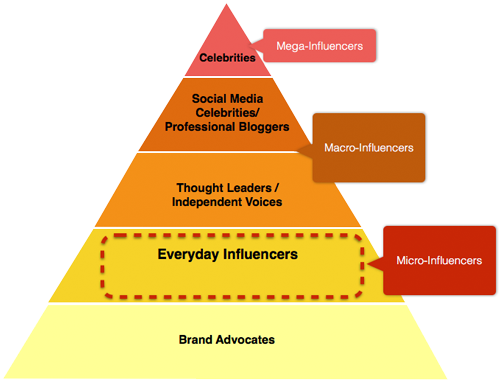
The Pyramid of Influence
The Pyramid of Influence encompasses the full spectrum of your influencer relationships. Here is a breakdown of how that pyramid works from the top down. Not all influencers are the same. Over the past few years, there is a big shift in focus from these high-end influencers to micro-influencers. To explain the different types of influencers, StarNgage uses the Pyramid of Influence. Influencers with a high reach and lower relevance, like celebrities and thought leaders, are at the top of the pyramid, while those with lower reach but higher relevance, like advocate and current customers are at the bottom. Micro-Influencers is a mix of people who have reach, but more importantly, have a high relevance among their audiences. Their influence lies in their niche understandings and the mutual trust with their audiences.
Spectrum of Influencers
The term ‘influencer’ used to describe celebrity and social media elite. But the mass adoption of social media leveled the playing field to include bloggers, instagrammers, youtubers and even everyday consumers. As such, the industry is working to establish a common taxonomy to talk about influencers. Influencers can be identified among the following three types:
Mega-influencers
Actors, artists, athletes and social media stars who have 500k+ followers and drive 2% to 5% engagement per post. They have the highest reach on the influencer spectrum, with their influence driven by their celebrity (they tend to be brands in their own right). They have the lowest overall resonance when it comes to driving actions on behalf of a brand.
Macro-influencers
Professional bloggers, and YouTubers who have large base of 50,000 to 500,000 followers and drive 5% to 20% engagement per post. They have the highest topical relevance on the spectrum, with category-specific influence – such as lifestyle, fashion or business.
Micro-influencers
Everyday consumers who have 500 to 100,000 followers and drive 25% — 50% engagement per post. They have the highest brand relevance and resonance on the spectrum of influencers, with influence driven by their personal experience with a brand and their strength of relationship with their networks.
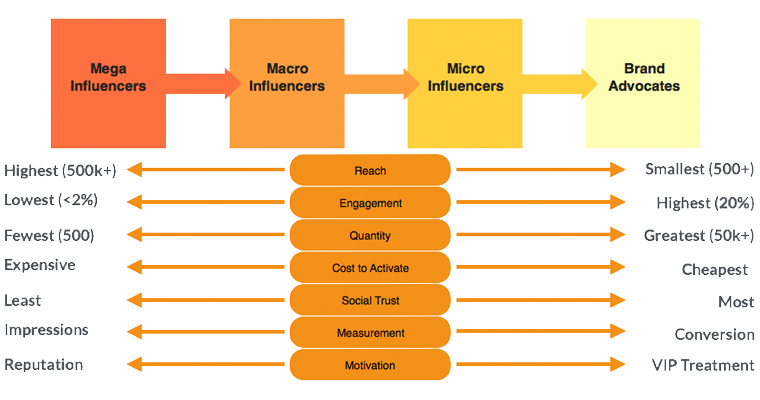
Social Media Influencer Landscape in Thailand
Mega-influencers: Earn their living some other way (e.g. athlete, actor, artist, top model, celebrity), and monetize their influence as a secondary source of income. (For example Araya Alberta Hargate and Aum Patchrapa) Macro-influencers: Earn their living as an influencer (e.g. professional blogger, creator, or journalist). (For example Simmers, Worama Umpaiarat and Chalisa Viravana) Micro-influencers: Consumers who have relevant influence and may not know it, or aspire to become a macro-influencer. (For example Juunep Thancha, Atthaneeya Eiamvasant, Jam Imraporn, Pemika Jiranorraphat and Ploypayap ) Brand Advocates: Consumers who are passionate and willing to share, but have little influence.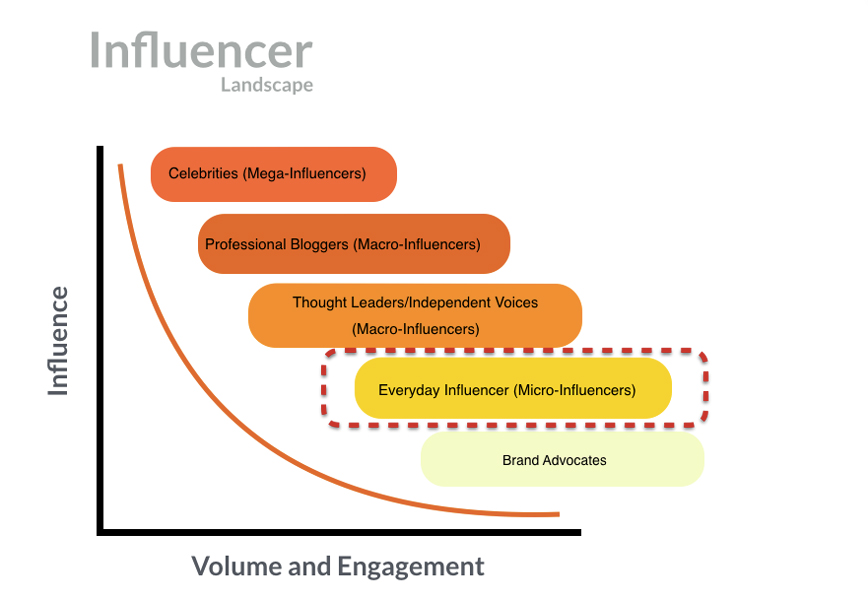
Top Youtubers (Youtube Influencers) in Thailand
Top Instagrammers (Instagram Influencers) in Thailand
How To Choose Your Influencer Marketing Content Types
Plan Your Content Type Before Activating The Influencers
Brand Generated
Brand creates the content and influencers are activated to share it with their networks.
Influencers don't add any personalization; they simply share the content. Least risk.
Less Creativity and personalization. Least impactful.
Co-Developed
Brand develops guidelines for the content and influencers create their own content based on adaptation. For example: “Share a picture of your selfie in Singapore Botanic Garden”.
Moderate Impact Pontential.
Mild risk.
Influencer Generated
Content is generated by Influencers based on their creativity. Brand gives loose and generic direction.
Influencers have full creativity with loose guideline from brands. Maximum impact.
Review process is needed as part of risk management as the risk is higher.
How To Choose the Right Incentive for Your Influencer
Plan Your Incentives Before Activating The Influencers
There are different factors you should consider before making a decision on what kind of incentives you offer to your influencers.
Exclusivity: Incentives should be exclusive to only influencers that you like to activate in order to motivate participation in your influencer marketing campaign.
Influencer type: Most of the mega-influencers and macro-influencers will require cash payment, while micro-influencers will consider other form of compensations aside from cash.
Brand affinity: The most enduring and valuable level of influencer relationship is based on the mutual belief that the influencers and the brand share common values. It is advisable to activate relevant influencer who is passionate about your brands for best results. Branded incentives will work best in this case.
Fulfilment Effort: If more effort is required by the influencer to create and share branded content, then a higher incentive value is needed.
Types of Incentives
Cash
For most of the mega-influencers and macro-influencers, you will have to use payments for incentives. However for micro-influencers, some of them are open to receive VIP treatments and special branded incentives other than cash.
VIP Treatment
When activating micro-influencers, the most popular incentive is an exclusive experience. This type of incentive works best when they are passionate about your brand. This could be in the form of a discount, gift card, limited product giveaway, VIP free trial etc.
Recognition
Micro-influencers are more than happy to receive non-monetary rewards such as recognition. You can do this by featuring their content on your owned media such as Website or share their voices and give them a limelight on your social media channel.
Common Incentives Ideas
- Exclusive Event
- Early Access
- Discounts
- Free Trial
- Contest Entries
- Gift Cards
- Experience Box
- Limited Product Sample
- Priority Service
Brands use StarNgage to Find Influencers
Request a consultation to discuss how we can help your next Influencer Marketing Campaign
Request For A Demo

